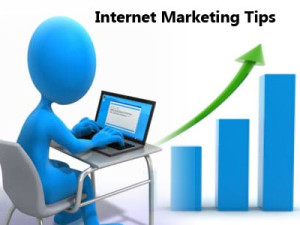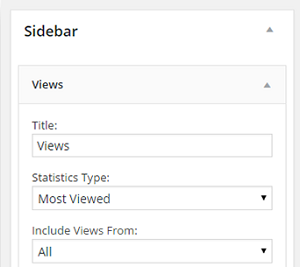Plus, centralizing soccer fan data.
MarTech’s daily brief features daily insights, news, tips, and essential bits of wisdom for today’s digital marketer. If you would like to read this before the rest of the internet does, sign up here to get it delivered to your inbox daily.
Good morning, Marketers, how do you know when your automated experience breaks down?
I recently tried to set up an online account for an important utility at my new home. It wasn’t taking, so I had to call the phone hotline. The automated phone system gave me the option to have them call me when my place in line came up to speak with a customer service rep. Unexpectedly, when I got the call back to speak to a rep, I was placed in another line for 30 more mins.
I mentioned this to the rep when I finally got to speak with her. She told me other callers were experiencing the same issue. I asked her how the company would know that there was a problem without her reporting it, since I wasn’t the first person who mentioned this problem to her.
In writing about marketing, I’m not always impressed when the customer experience is explained in terms of a marketer’s (or journalist’s) experiences. It’s a very small sample size not always applicable to larger groups of consumers who aren’t as much in-the-know. But in this case, I simply point out that there should be many opportunities in the CX for customer input. How else will you know when customers give up, and why?
In my case, the human service rep built out my account manually over the phone because the automated system had a bug. If it wasn’t such an important utility, I would have quit and taken my business elsewhere.
Chris Wood,
Editor
A revised manifesto for Agile’s next wave
Agile marketing coach and trainer Stacey Ackerman offers a brief history of the movement and where a revised Agile Marketing Manifesto fits in. This September, agile marketers from around the world came together to help shape the next wave of agile in the marketing space with a revised manifesto.
The first agile manifesto, the Manifesto for Agile Software Development, was created in 2001 and has led the idea of what it means to be agile in terms of values and principles for 20 years. When this was created, there was a great divide between business people and software developers and a lot of this original manifesto was to help foster better collaboration between these two parts of companies. This manifesto is still used today.
While software teams pioneered the agile movement, they soon realized that agility is a cultural change that the whole company needs to get behind. This next wave is often referred to as ‘business agility’ where we transform old ways of working across software, human resources, finance, and of course, marketing.
The agile movement began with a very small group of early adopters in marketing nine years ago, when they created ‘Sprint Zero’, which was the birth of the first Agile Marketing Manifesto. The group intended to revise the values and principles frequently, but it took nearly a decade for that to become a reality. With a lot of collaboration from the community, the new manifesto is a true reflection of where we are today in a world that’s unpredictable, global and vastly remote.
The Agile Marketing Manifesto has become a single source of truth to ground marketers that want to be agile in the cultural changes they need to live by.
Getting a kick out of CDPs
At a time when sporting events were shuttered, the U.S. Soccer Federation focused its energy on a new goal: organizing its customer data in a way that unlocked a more tactical approach to marketing.
Step one was to implement a customer data platform. And as the world opens back up and soccer is back in action, U.S. Soccer has a new approach to connect with millions of fans while keeping a tight budget and staff.
“We really only have about 15 to 20 people that are working directly on our loyalty program between marketing and our product and business intelligence teams,” said Ross Moses, Senior Director, Analytics and Insights for the United States Soccer Federation. “We don’t have the ability to go in and basically turn on campaigns every day for different types of segments.”
Implementing the CDP helped U.S. Soccer centralize its data for a more complicated marketing automation strategy.
“We needed something that was going to update in real-time,” Ross said. “It’s going to plug into all kinds of data sources and ultimately be able to react in real-time based on who that customer is. If somebody changes from a non-ticket buyer to a ticket buyer, the campaign has to update accordingly, and the same goes for all of our business lines.”
Instead of turning customers off, try “always-on”
No marketer wants to overcommunicate with their target customers. But the demands of a campaign-driven strategy often result in flooding customers with sales offers to promote their product or service.
“If you put yourself in the customer’s shoes, it’s like a nonstop barrage of sales stuff flying at you all the time, and it can be really off-putting for all of us,” said Matthew Camuso, Product Marketing Manager at Pegasystems, speaking at MarTech. “The average response rate on a campaign and the US is around 1%, which means that 99% of the time the things we put out there in the market are getting ignored.”
One idea is to create an “always-on” marketing strategy to approach customers better, but it’s important to remember that “always on” doesn’t mean “always communicating.”
“You work to help them solve that problem right there in the right channel exactly when they need it. That’s how the always-on marketing program works,” Camuso said.
Camuso says marketers employing an always-on marketing strategy need help through some kind of “centralized brain”, more specifically an AI-driven platform that allows for personalized messaging on various marketing channels.
Quote of the day
“The idea of the customer journey is really a combination of both intelligence from marketing systems but also orchestration, as well as all of you and your teams — because it’s you who generate those experiences. There’s actually a direct correlation between employee experience and customer experience.” Ben Tepfer, Senior Technical Evangelist for Adobe (see his full talk at MarTech here)
The post Revising agile: Friday’s daily brief appeared first on MarTech.
MarTech(29)








